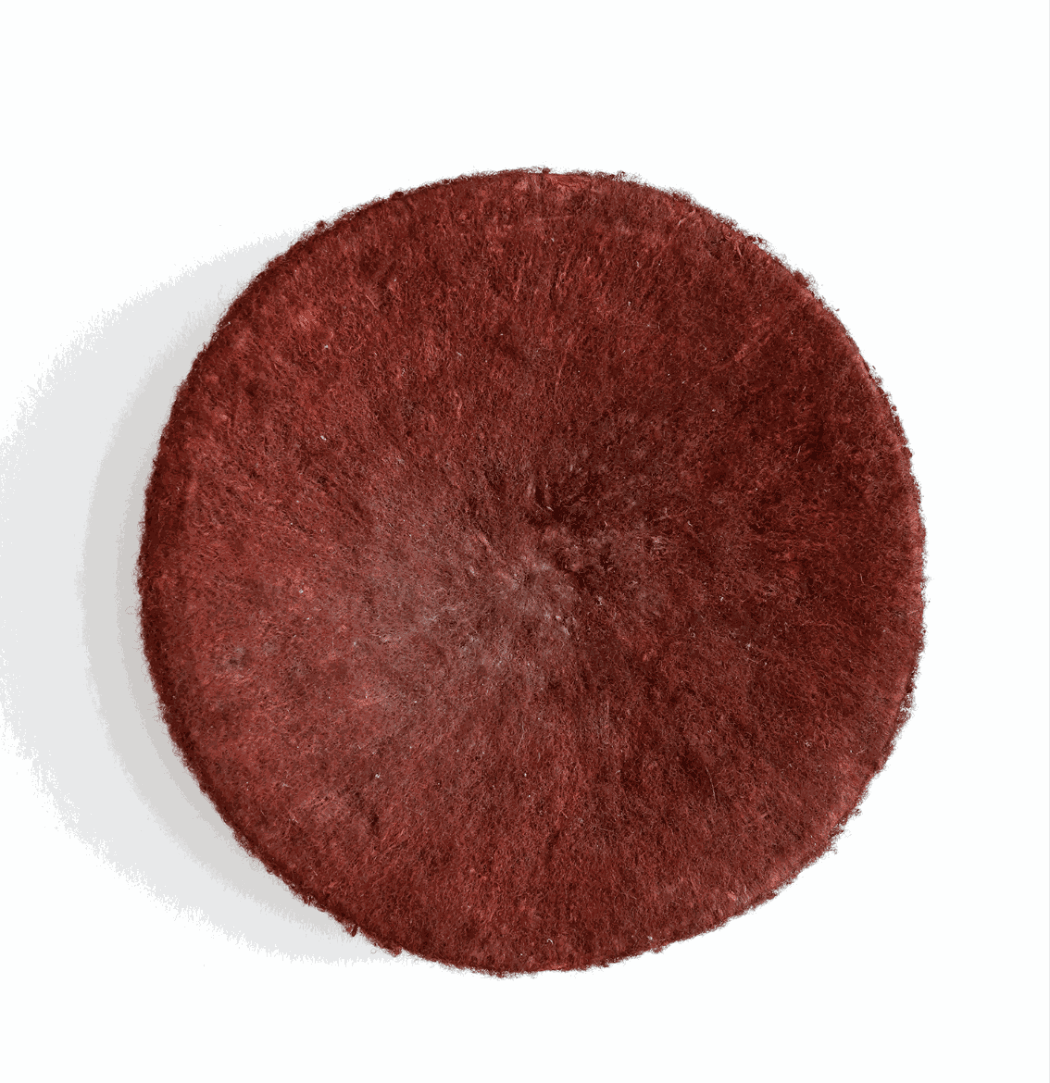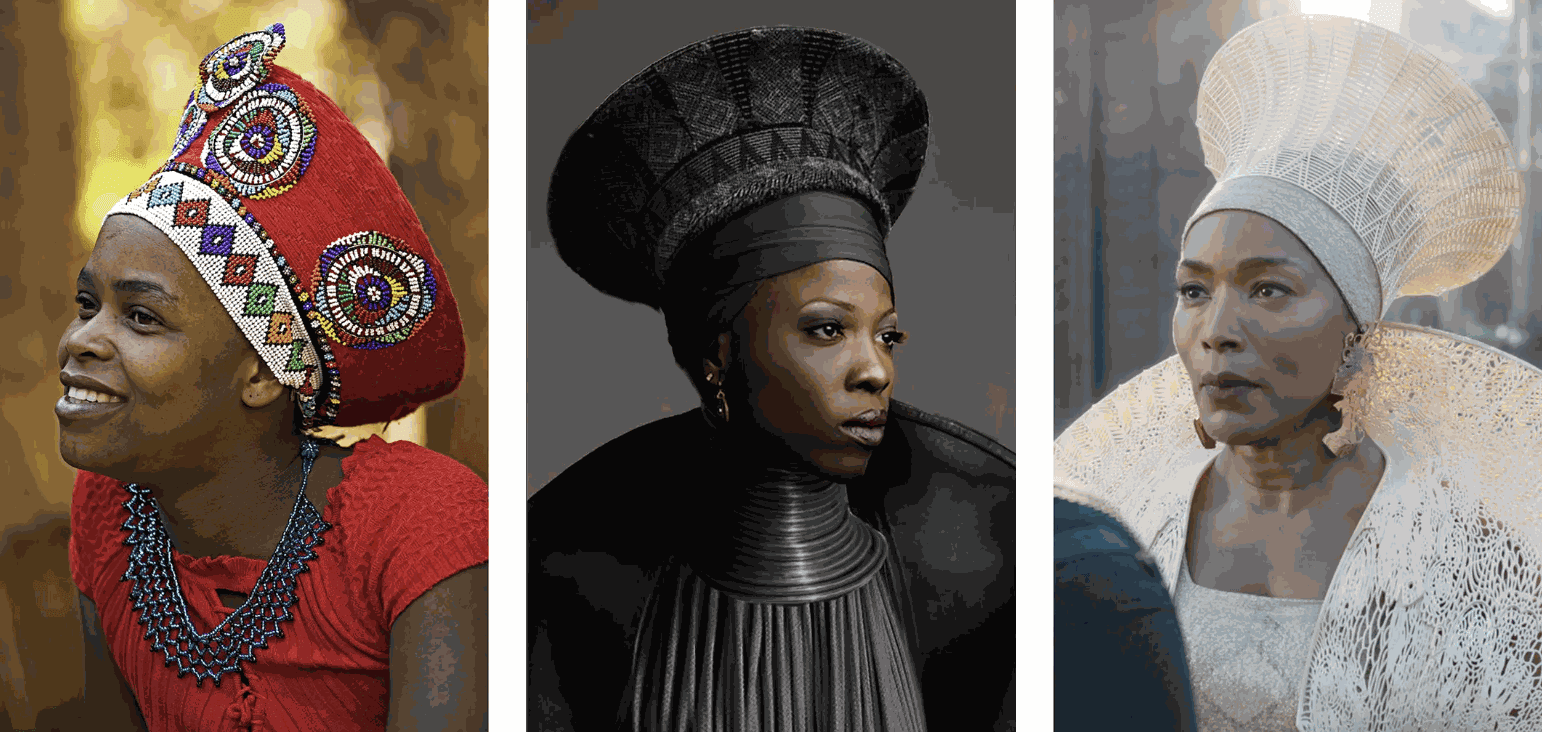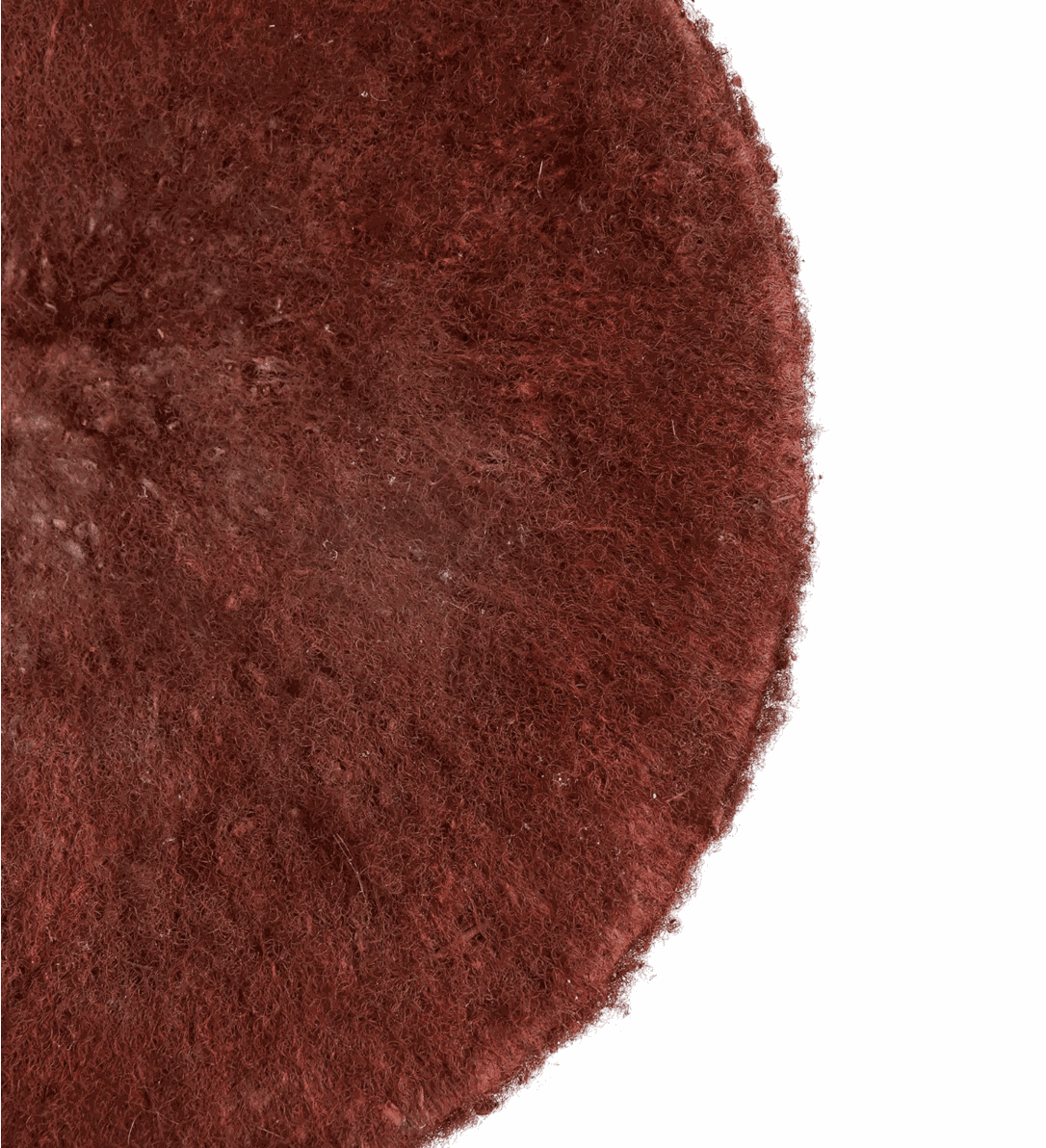
Anonymous Zulu artist
South Africa, Mid 20th century
Hair, fibers. 45 x 5 cm
Provenance
Justin Barthels, Maastricht, The Netherlands
By descent through family, 2022
In many African cultures, hats represent an extension of traditional hairstyles and can signify cultural, social, and personal meanings. The form of the isicholo, or married woman’s hat, developed out of a 19th century conical hairstyle that was worn as a sign of respect to one’s husband and his family, in addition to serving as a public symbol of married status. In the early 20th century, women started wearing removable hat like this one that mimicked the hairstyle instead of the coiffure itself. The hat could easily be removed at night and the advantage of this was it allowed a consistent form, without the necessity of incessant maintenance. This headdress, with its flaring disk-like shape, is constructed of a basketry foundation covered with coloured human hair. More recent the concept of growing hair for the hat was discarded and substituted by weaving the form with fibers, grass, cotton or later string and fabric.

Left: A similar Zulu woman’s hat (isicholo). Cotton, human hair, red ochre over grass-fiber basketry frame. 10 x 46,5 cm. Collection Museum of Fine Arts, Boston (#2009.5342). Right: A Zulu bride from Natal in South Africa wearing a isicholo photographed in Tugela Ferry in 1996. Published in: Fischer (Angela) & Beckwith (Carol), “Une collection africaine: objets d’usage et de beauté - An African Collection: Objects of Use and Beauty”, Sotheby’s, Paris, 10 September 2007:53
A variety of hat styles were adopted in regional areas, coherent with the dress and beadwork of particular clans in that area. In the Msinga and Nquthu area, hat styles were marked by simplicity and often unadorned. The reddish hue - associated with beauty and femininity - is the result of the application of a red ocher and fat mixture colorant. While this is an older example Zulu women still wear isicholo on important occasions, especially in the Msinga district, the seat of the Zulu king, and they have become an icon of Zulu identity, even inspiring the costume designers of the Hollywood blockbuster “Black Panther”, when designing the headgear for Queen Ramonda.

Left, a Zulu woman in the traditional headdress of a married woman; center, a conceptual costume sketch by Ms. Carter (design) and Ryan Meinerding and his team (concept artists); and right, the headdress as worn by Angela Bassett in the movie. Image courtesy of Getty Images; Marvel; Marvel/Disney.
